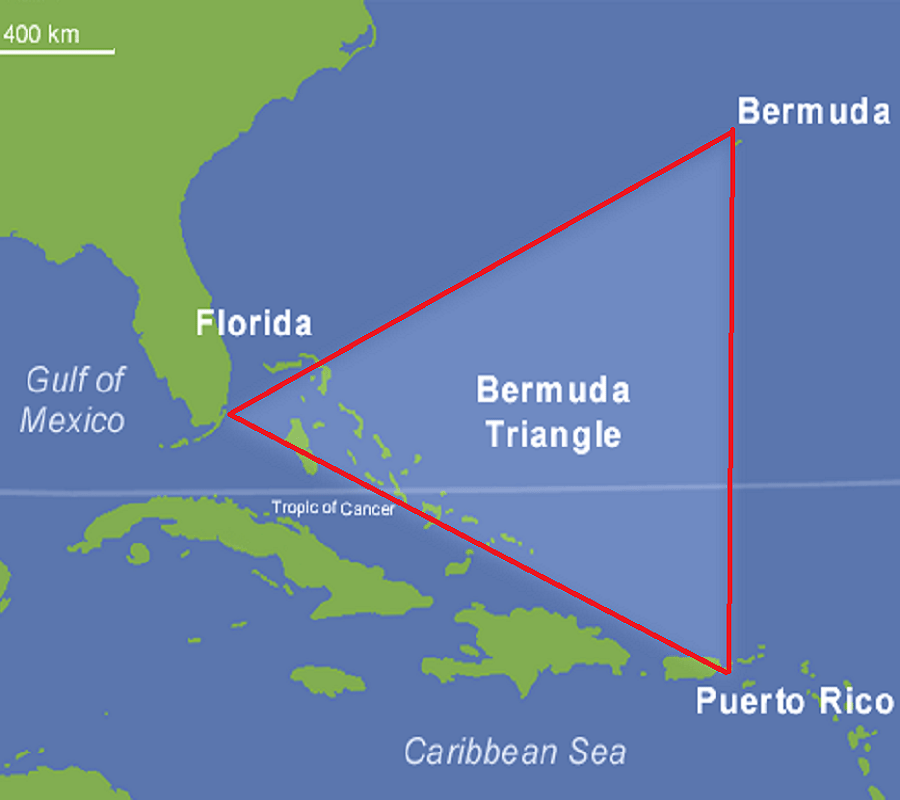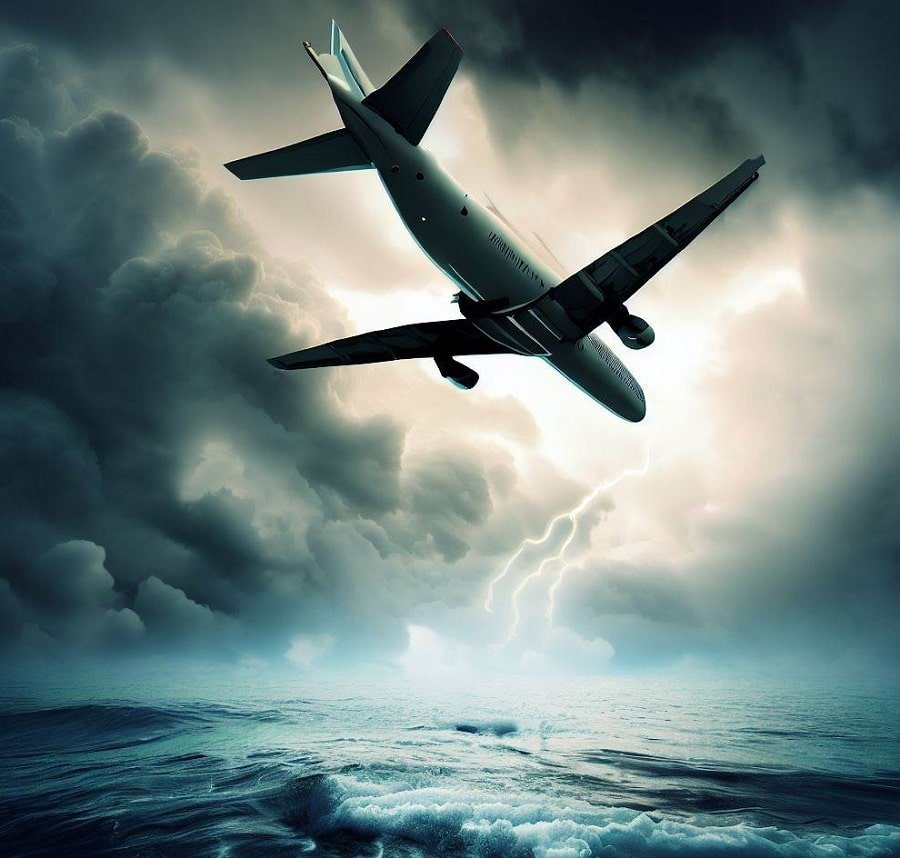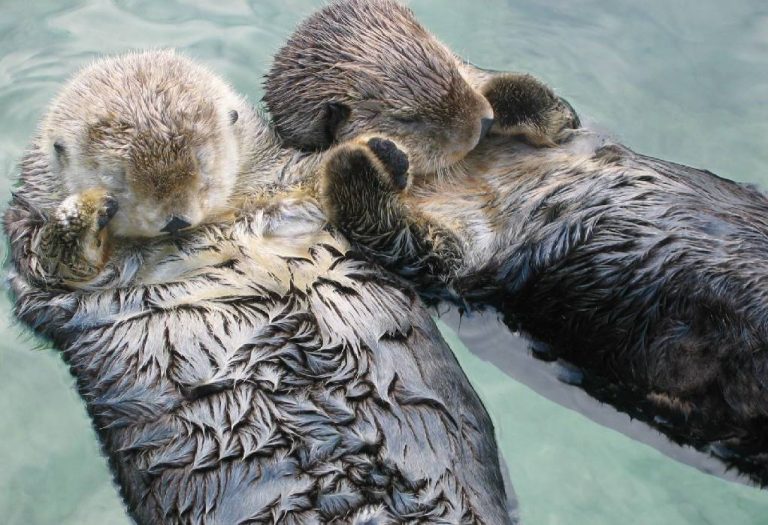New Theory Solves Bermuda Triangle Mystery
Last Updated on 29th March 2024 by admin
The Bermuda Triangle, often referred to as the “Devil’s Triangle,” is a region in the western part of the North Atlantic Ocean that has been shrouded in mystery for decades. It has gained notoriety due to the unexplained disappearances of numerous ships and aircraft over the years. While the Bermuda Triangle has been a subject of fascination and fear, a new theory has emerged that could potentially shed light on its mysteries.
In this comprehensive article, we will delve into the history of the Bermuda Triangle, explore the recent Methane Hydrate Hypothesis, and consider the various factors contributing to this enduring enigma.
Table of Contents

The Historical Enigma of the Bermuda Triangle
The Bermuda Triangle, a stretch of ocean roughly bounded by Miami, Bermuda, and Puerto Rico, has puzzled and frightened people for decades. Its infamy can be traced back to a series of unexplained incidents involving ships and aircraft that have gone missing in the region since the early 20th century. These mysterious disappearances have given rise to countless theories, urban legends, and conspiracy theories.
Early Incidents
One of the earliest and perhaps most famous incidents linked to the Bermuda Triangle occurred in 1918 when the USS Cyclops, a massive coal-carrying ship with a crew of over 300, vanished without a trace. Despite extensive search efforts, no wreckage or survivors were ever found. This incident marked the beginning of the Bermuda Triangle’s ominous reputation.
Flight 19
The year 1945 brought one of the most puzzling cases to the forefront: the disappearance of Flight 19, a squadron of five U.S. Navy bombers. During a routine training flight, the planes lost contact with their base and subsequently ran out of fuel. All 14 crew members were lost at sea. Adding to the intrigue, a rescue plane sent to locate Flight 19 also disappeared without a trace.
The Carroll A. Deering
In 1921, the schooner Carroll A. Deering was found abandoned off the coast of Cape Hatteras. The crew had vanished, leaving behind only a ghostly message scrawled on the ship’s message board. Despite investigations, no satisfactory explanation was ever found for their disappearance.
Theories and Speculation
Over the years, numerous theories have been put forward to explain the strange occurrences in the Bermuda Triangle. These theories range from natural explanations such as sudden storms and underwater geological features to more far-fetched ideas involving extraterrestrial activity and underwater city ruins. While some theories offer plausible explanations for individual cases, none have provided a comprehensive answer to the enigma of the Bermuda Triangle.

The Mystique Endures
Despite the passage of time and the advancement of science, the mystique of the Bermuda Triangle endures. It continues to capture the human imagination, drawing people into its web of fascination and fear.
Intriguing Tales
Over the years, the Bermuda Triangle has spawned a plethora of intriguing tales and legends. These stories, often featuring vanishing ships and aircraft, have become a staple of popular culture. They inspire countless books, documentaries, and even movies, each attempting to unravel the secrets of this enigmatic region.
Endless Speculation
The Bermuda Triangle is a place where speculation knows no bounds. From the plausible to the outlandish, theories about what happens within its boundaries run the gamut. Some suggest that powerful electromagnetic anomalies are at play, interfering with navigation equipment. Others propose that time warps or wormholes transport ships and planes to other dimensions. While these ideas may stretch the boundaries of scientific credibility, they showcase the enduring allure of the Bermuda Triangle.
A Natural Wonder
In many ways, the Bermuda Triangle is a natural wonder in its own right. It’s a place where the ocean’s depths hold secrets that have yet to be fully uncovered. The region is home to a rich variety of marine life, coral reefs, and underwater caves. This natural beauty contrasts sharply with the tales of mystery and intrigue that surround it.
The Search for Answers
Despite the plethora of theories and speculations, the Bermuda Triangle continues to defy easy explanations. Researchers and scientists are not content to leave its mysteries unsolved. They continue to investigate the region, searching for scientific insights that can shed light on the unusual phenomena that have occurred there.
The Human Element
The Bermuda Triangle is also a testament to the enduring human spirit of exploration. It beckons adventurers and explorers from around the world, inviting them to chart its waters and skies. While modern technology has made travel through the region safer, the allure of the unknown still pulls at the hearts of those who seek to understand it.
The Methane Hydrate Hypothesis
One of the most recent and promising theories to explain the Bermuda Triangle mystery is the “Methane Hydrate Hypothesis.” This theory proposes that methane hydrate deposits located beneath the ocean floor could hold the key to understanding the strange phenomena in this region.
Methane Hydrates: The Silent Threat
Methane hydrates are ice-like structures composed of methane gas molecules trapped within a lattice of water molecules. They are known to exist in large quantities beneath the ocean floor and are incredibly stable under high-pressure conditions. However, when disturbed, these hydrates can release vast amounts of methane gas.
The Deadly Methane Burp
According to the Methane Hydrate Hypothesis, seismic activity or undersea landslides in the Bermuda Triangle region could disrupt the stability of methane hydrates. This disturbance might trigger a catastrophic release of methane gas into the water column, creating massive bubbles that reduce the water’s density. As a result, ships passing over these gas pockets would lose buoyancy and sink without warning.
Supporting Evidence
Researchers have reported unusual sonar anomalies in the Bermuda Triangle, indicating the presence of large gas pockets beneath the ocean floor. These anomalies correspond with the locations of several documented disappearances. Additionally, eyewitness accounts from survivors of Bermuda Triangle incidents often mention rapid, unexpected changes in weather conditions. Methane gas eruptions could explain these abrupt shifts, as escaping gas can alter atmospheric pressure and create turbulence.
Debunking the Myth
While the Bermuda Triangle has earned its reputation as a place of mystery and intrigue, it’s essential to separate fact from fiction and consider rational explanations for the incidents that have occurred in the region. While some of these occurrences remain unexplained, many can be attributed to more earthly and scientifically plausible factors.
Human Error and Navigation Challenges
One of the most crucial aspects to consider when examining incidents in the Bermuda Triangle is the element of human error. Pilots and ship captains are not infallible, and even experienced professionals can make mistakes. In the case of Flight 19, the squadron of Navy bombers that disappeared in 1945, navigation errors and fuel exhaustion likely played a significant role. Similar issues, such as compass malfunctions, could have affected other vessels in the region.
Severe Weather Conditions
The North Atlantic, where the Bermuda Triangle is located, is notorious for its rapidly changing weather patterns. Sudden and violent storms can descend upon ships and aircraft, causing them to encounter extreme turbulence or navigational challenges. These conditions can disorient crews and make it difficult to maintain control.
Natural Phenomena
The Bermuda Triangle is also home to geological features and phenomena that can pose risks to navigation. Underwater volcanoes, for instance, can release gas bubbles that reduce the water’s density, potentially causing ships to lose buoyancy suddenly. While such occurrences are relatively rare, they can account for some of the anomalies associated with the region.
Improved Technology and Safety Measures
In recent decades, advancements in technology have significantly improved safety for ships and aircraft navigating the Bermuda Triangle. GPS navigation, advanced communication systems, and more robust search and rescue capabilities have reduced the likelihood of incidents going unresolved. It’s worth noting that the frequency of mysterious disappearances has decreased significantly in the modern era.
The Need for Critical Thinking
While it’s undeniable that the Bermuda Triangle has seen its share of puzzling incidents, it’s essential to approach the topic with critical thinking and a healthy dose of skepticism. Not every vanishing ship or aircraft can be attributed to supernatural or unexplainable forces. By examining the available evidence, considering rational explanations, and acknowledging the human element, we can demystify many of the Bermuda Triangle’s supposed enigmas.
In doing so, we can appreciate the complexities of navigation, the power of natural forces, and the resilience of the human spirit when faced with the challenges of the open sea and the vast skies. While the Bermuda Triangle may always be a place of fascination, it need not remain a source of unfounded fear or superstition.
The Road Ahead
As we continue to explore the mysteries of the Bermuda Triangle, it becomes clear that this enigmatic region holds both scientific and historical significance. While the Methane Hydrate Hypothesis has emerged as a promising explanation for some of the Bermuda Triangle’s perplexing incidents, the journey to uncover the truth is far from over.
Ongoing Scientific Inquiry
Researchers, scientists, and oceanographers remain committed to unraveling the secrets of the Bermuda Triangle. They conduct rigorous studies to better understand the geological, meteorological, and navigational factors at play in this region. Through meticulous research and analysis, they aim to validate existing theories and develop new ones that shed light on the enduring mysteries.
Advanced Technology and Exploration
In the modern era, technological advancements have enabled us to explore the Bermuda Triangle with greater precision and safety. Submersibles equipped with cutting-edge sensors and remotely operated vehicles (ROVs) are used to explore the depths of the ocean floor, allowing us to gather crucial data about underwater geological features and methane hydrate deposits.
Collaboration and International Efforts
The Bermuda Triangle is not confined by national borders, and its mysteries transcend geographical boundaries. International collaboration among scientists, researchers, and governments is vital to comprehensively study this region. Joint efforts to share data, conduct joint expeditions, and pool resources enhance our ability to solve the mysteries.
Educating the Public
One of the essential aspects of the road ahead is educating the public about the Bermuda Triangle. Dispelling myths and superstitions is crucial to fostering a better understanding of the actual risks and challenges associated with navigation in this area. Encouraging critical thinking and promoting responsible exploration can contribute to a more accurate perception of the Bermuda Triangle.
Embracing the Unknown
While we strive to uncover the scientific truths behind the Bermuda Triangle’s mysteries, it’s essential to acknowledge that some questions may never have definitive answers. Embracing the unknown is a fundamental aspect of exploration and discovery. The Bermuda Triangle will likely continue to captivate our imaginations, reminding us of the boundless wonders and uncharted territories that still exist on our planet.
Conclusion
The Bermuda Triangle has mystified the world for generations, but the Methane Hydrate Hypothesis provides a plausible explanation for some of its perplexing incidents. While this theory doesn’t solve every mystery, it invites us to explore the hidden depths of the ocean and the complex forces that shape our world.
Intriguingly, the Bermuda Triangle continues to be a place where myth and reality intersect, inviting us to explore the unknown and contemplate the many secrets that our vast oceans still hold.



